So you’re giving your Malt a quick bath one day and begin scrubbing off the grime, dirt, pee and who knows what else from the coat. Afterward, you dry your puppy off and let it go on its post-bath mad dash around the house where it rolls around the rug, sofa, bed and whatever other surfaces it can get its paws on.
After your Maltese has calmed down, you come across a puzzling revelation – your Maltese is not as white as you thought, and you begin to wonder. Are all Maltese white, and can they have spots? Can they come in other colors like black or brown? A purebred Maltese should have a pure white coat, although they can sometimes have lemon or tan colored areas. Other than the coat, black ‘spot’ markings (i.e., eye rims, paws, nose, lips) are also an expected trait of the Maltese.
Note that although the lemon and tan color is considered to be permissible, it is not a desirable color on the coat of a purebred Maltese. Of course, more significant concerns arise when you notice an unexpected but noticeable change in color, particularly when the dog transitions from puppyhood to adulthood. We’ll look into why this might happen and if it’s healthy, as well as some potential treatment options.
The “Standard” White
First, let’s see what some English-speaking official breed standards have to say for the Maltese. You can find this at the website of your country’s kennel club, though we’ll take a closer look at the American Kennel Club (AKC). The AKC documentation here describes the Maltese under the section “Coat and Color”:
The Coat is a single, that is, without undercoat… Any suggestion of kinkiness, curliness, or woolly texture, is objectionable. Color, pure white. Light tan or lemon on the ears is permissible, but not desirable.
– The American Kennel Club
The Kennel Club in the UK gives a more succinct description:
Pure white, but slight lemon markings permissible.
– The Kennel Club (UK)

Similarly, the Canadian Kennel Club claims:
White colour is preferred, but light beige or lemon markings are permissible.
– The Canadian Kennel Club (CKC)
Intriguingly, the Australian National Kennel Council has something more lenient to say about the Maltese:
Pure white, but slight lemon markings should not penalise. Most Maltese are born with biscuit coloured ears, as in the Samoyed or white Poodle, and may have some slight markings on the body coat. These usually fade at the adultage of 2 years. The colour may remain on the ears under the topcoat and is not a penalty. Black pigmentation is so vital to the Maltese for expression and difficult to retain in a pure white dog, therefore, some coat colour is permissible. The coat may sometimes appear slightly cream in a heavily pigmented dog.
– The Australian National Kennel Council (ANKC)
In summary, we can say the expected color for the coat of any Maltese to be “pure white,” and at most, a cream, lemon, beige or tan colored pigmentation of the fur/hair on the ears is considered normal. Please note that this is standard concerns breeding and showcasing and does not mean a Maltese with some patches of light color is deficient or unhealthy in any way, only that it is considered undesirable for a competition.
Vets usually claim that the discoloration goes away in due time, but this does not always happen (see anecdotal recounts here and here). The most important thing to note here is that the “tanning” can occur in many places on the coat of a Maltese, though it is by far the most common around the ears (including the little bit of hair they have under the ear). Again, we’d like to stress that your Maltese is not unhealthy if this happens! If you are seriously concerned then consult a vet.
A Non-White “Maltese”
Of course, if we are moving into the realm where the dominant, or a significant portion of the Malt’s coat is actually not white, or if the discoloration is particularly heavy (in even a smaller area) there are a few plausible reasons why this might be the case. The first is there may be persistent and intensifying staining due to improper hygiene or grooming reasons. Thankfully, this is reasonably simple to treat and even easier to prevent.
You’ll need to closely check the area where the discoloration is happening and try to find the culprit. Look for knotted, twisted and matted areas of the Malt’s hair, which encourages small articles like plant seeds or feces to be stuck and can encourage further clumping of dirty things. If your Malt enjoys rolling around in wet areas in and around lawns or parks, this is a fairly common happening and it may not be realistic to restrict your dog from doing so entirely.
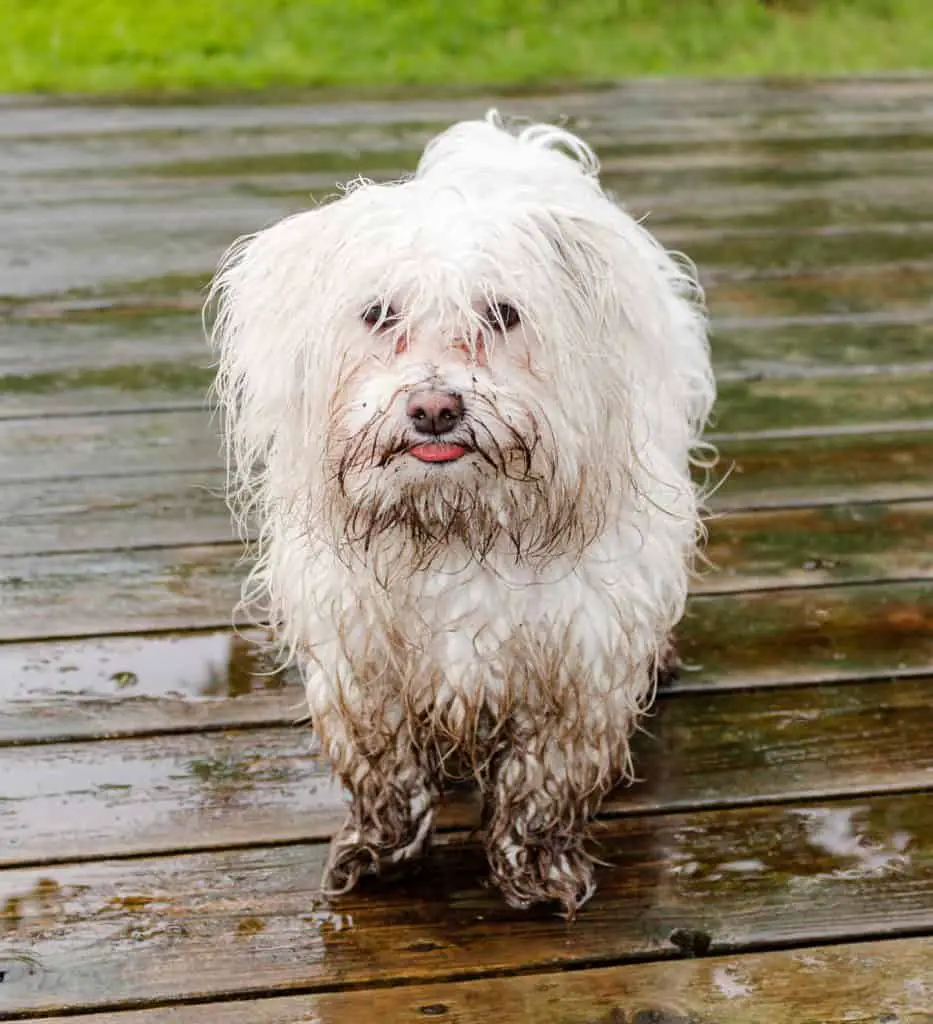
You can try to trim your Maltese’s hair short, so it resembles a puppy (i.e., puppy cut). Of course, this is a stylistic preference, so if you do leave it out to grow into longer lengths, then you will need to do your due diligence and regularly wash the Maltese and sort out the knots during the grooming process. Keep in mind you will need to strike a balance between the frequency of bathing to clean the coat and refraining from excessive bathing which can be damaging to the skin of the Maltese.
If you find the shampoo you regularly use to wash your Maltese isn’t cutting the mustard, then it may be time to look into a brightening solution to directly treat this problem. Something similar to this shampoo should work well for a stubbornly dirty Maltese, which is pH balanced and contains no bleaching agents which are harsh on your Maltese’s skin and hair. For a similar reason, avoid mixing a DIY solution in an attempt to quickly “bleach” the target area. If and only if you know what you are doing (i.e., advised by a vet), you may be able to use some household chemicals to formulate a gentler treatment for your Maltese.
Another related and widespread reason is known as “tear staining.” Tear staining will appear as reddish-brown discoloration under and around the eyes of a Maltese and is particularly prominent in contrast with the Malt’s white hair. It is caused by excessive tear production and is dependent on the genetics of the dog – not all Maltese have this problem.
Tears carry a molecule called porphyrins which contain iron and can also be found in saliva or the sweat of the dog (sweat is only excreted through the paw pads). As a result, this staining not only happens around the eyes but can occur below the mouth of the dog (where the “beard” would be) or anywhere where the Maltese might be excessively licking. When these porphyrins stick to fur for a long time and once they are exposed to sunlight, will eventually give its characteristic shade of yellow, red and brown discoloration.
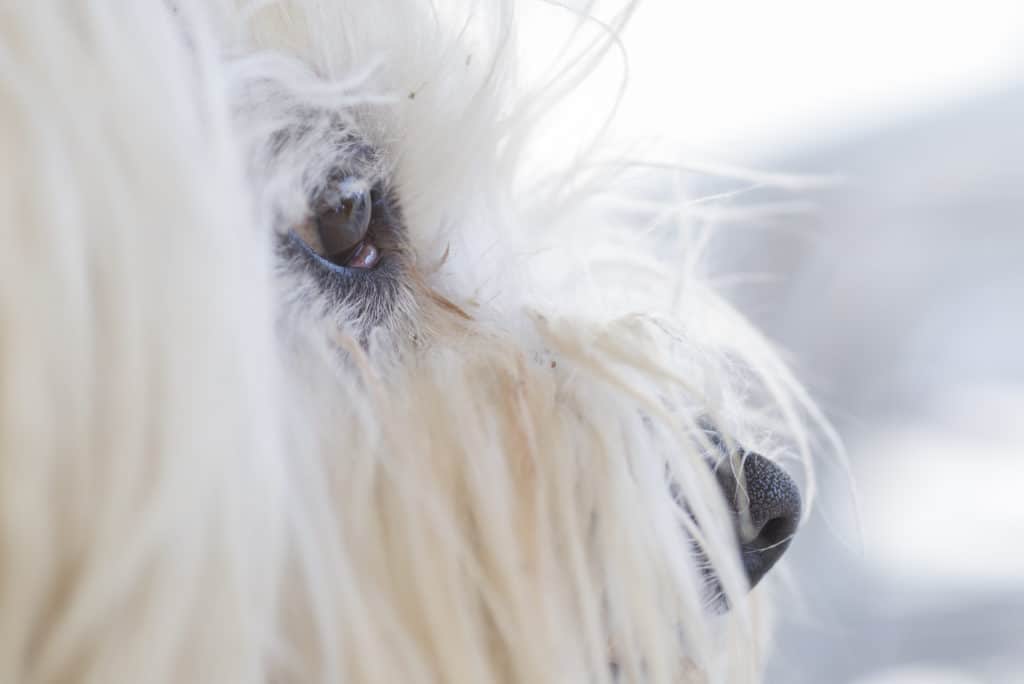
You can change what you feed your Maltese and how you do so. Start by using a glass or stainless steel food bowl instead of a plastic one as the latter can carry harmful bacteria which can worsen the condition. The water bowl can be swapped out for a water bottle (like this one on Amazon), which prevents excessive water from splashing onto the face. Certain carbohydrate-heavy foods like wheat or corn can cause trigger a minor allergy and can aggravate the tearing. Tear staining is a complicated topic, and we’d like to refer you to a future article where we explore this in further detail.
Lastly, your Maltese might not even be a Maltese! Or at the very least, it might be a Maltese mix. This can potentially be the most unpleasant reason to hear, especially if you were promised and sold a purebred by an unscrupulous breeder only to find the color or size of your “Maltese” to be very different in its adulthood. There’s nothing you can really do in this case except to angrily shake your fist to the distance and accept the reality that you have a different (or cross) breed to take care of now.
We ask that no matter if your dog is a purebred, cross, not-a-Maltese, or a Maltese with heavier pigmentation that you continue to love your dog all the same. If you chose your Maltese based entirely off the premise that you wanted a white dog, then your only real justification would be for “show” reasons. Else, it really shouldn’t matter too much as long as your dog is healthy and well.
Next, we’ll take a look at some closely related cousins of the Maltese called Barbichon types. They are, in no particular order: Havanese, Bichon Frise, Bolognese, Bolonka and Coton de Tulear.
Havanese
First up – the Havanese. These dogs come in an impressive range of colors, including black, silver, chocolate, cream, gold, red and white!
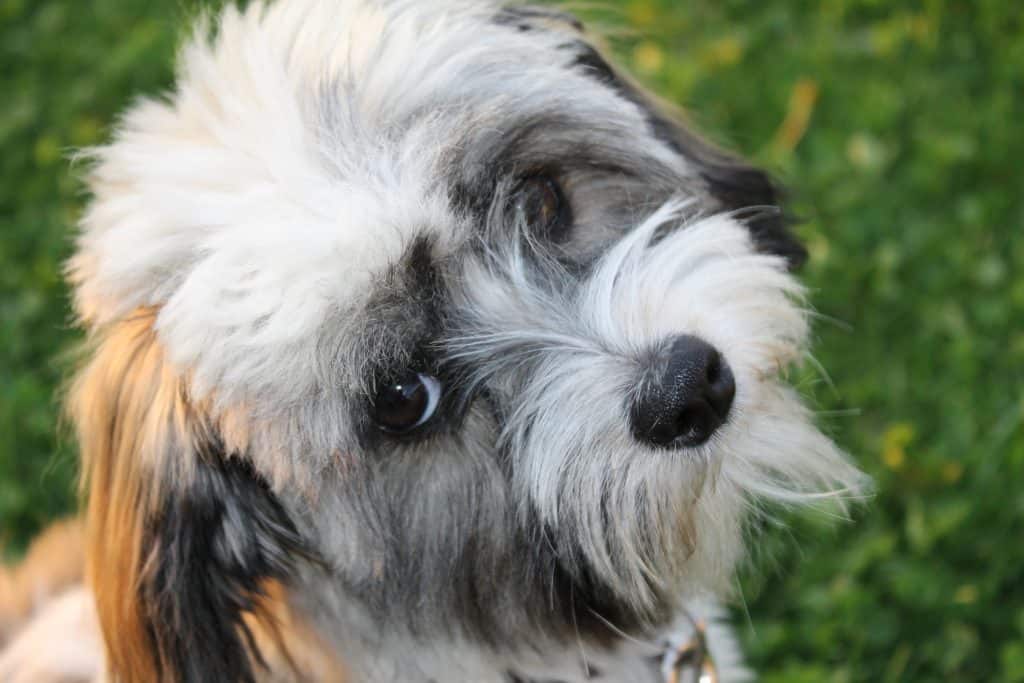
Bichon Frise
The Bichon Frise, on the other hand, is usually only found in white. Occasionally, they may have cream or apricot colorings on their coat, though the AKC claims in this breed standard document “any color in excess of 10 percent of the entire coat of a mature specimen is a fault“.
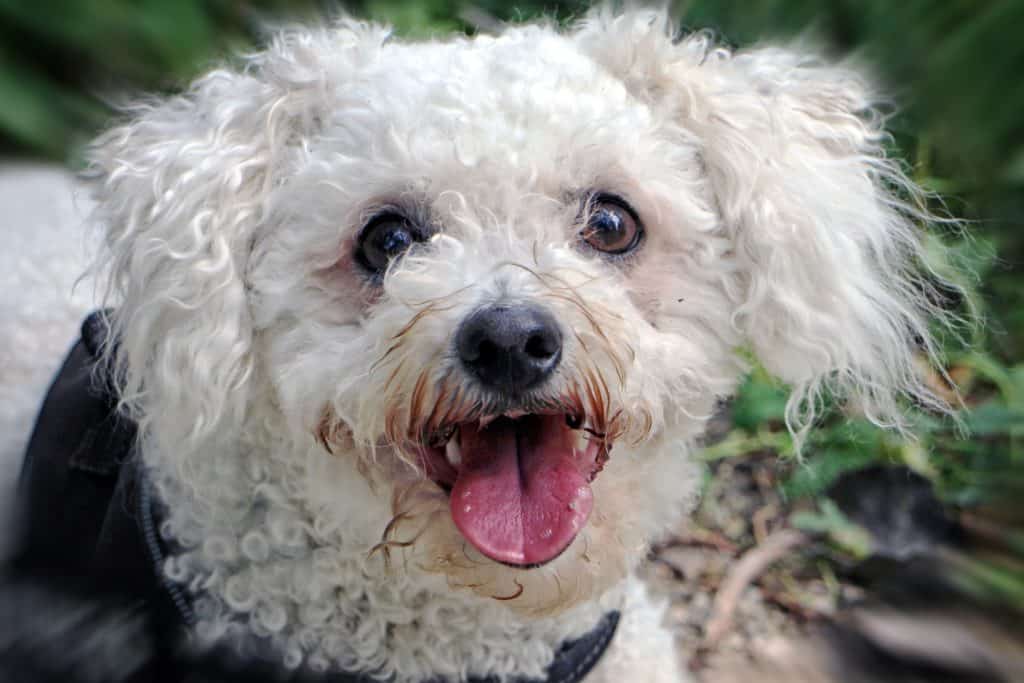
Bolognese
Another white breed that somewhat resembles the Maltese – the Bolognese dog is pure white and can sometimes have a very slight shade of ivory.
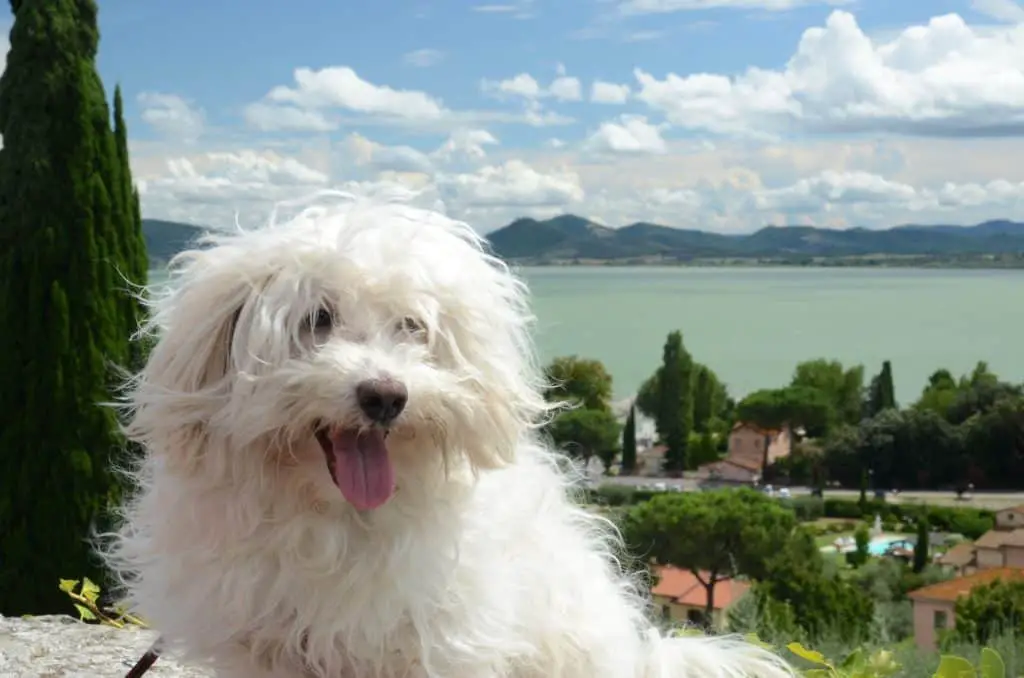
Bolonka
The “Russian Tsvetnaya Bolonka” or the more commonly known name of Bolonka is a breed that was almost extinct until after the Cold War. By far the rarest dog in the group, the Bolonka comes in black, brown, gray, and red colors.
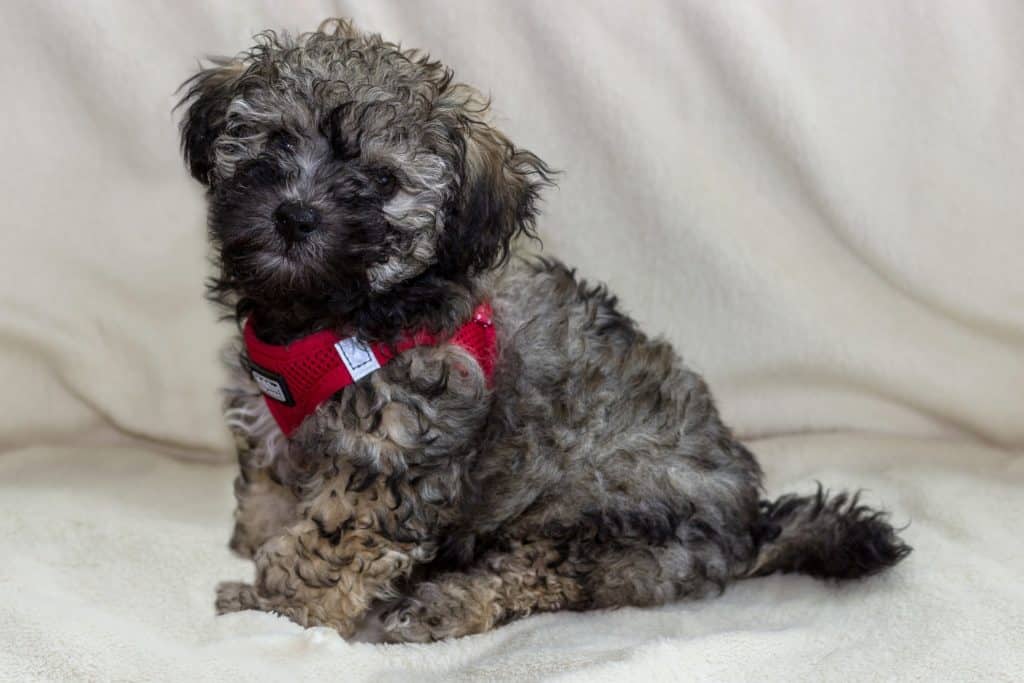
Coton De Tulear
Lastly, we have the Coton De Tulear which has a white coat. There may be slight colorings of grey or tan hairs around the ear, similar to a Maltese.
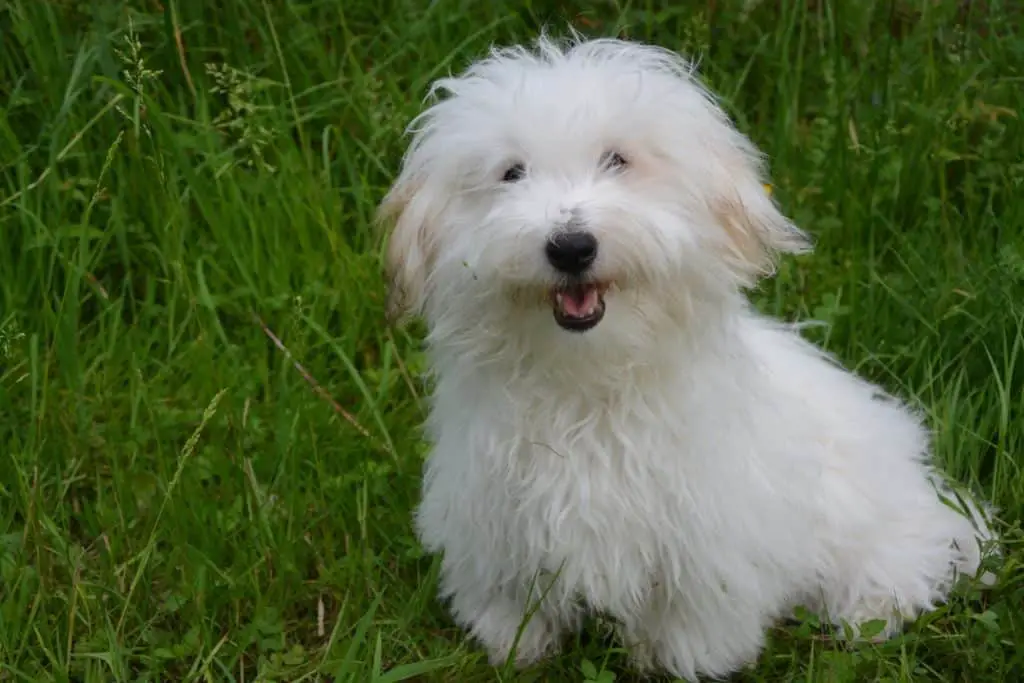
The Rare Albino Maltese
Yes, the albino does exist in dogs too, though they are extremely rare. It might seem a bit strange to have an albino Maltese given their natural white appearance, and there are some marked differences between a normal Maltese and an albino. Albinos typically have pink rings around their eyes as opposed to black, and their noses will be a similar color. They may also have blue eyes and will have a white coat, though the latter obviously makes no difference to the Maltese.
Albinos are prone to health complications thanks to their inability to produce melanin. This means they are more prone to sunburns and cancers arising from excessive ultraviolet exposure, and their eyes are prone to deformities from birth, which leads to poor vision or even blindness. An albino Maltese will have to stay out of the sun more often than normal Maltese and may require protective equipment, including eyewear like goggles.
Further Reading
PetSafe – “Ask a Vet: Why Is the Fur on My Dog’s Face or Body Stained Brown?” – Link: https://www.petsafe.net/learn/ask-a-vet-why-is-the-fur-on-my-dogs-face-or-body-stained-brown
VetStreet – “Dog Breeds You Might Not Know Are Related” – Link: http://www.vetstreet.com/our-pet-experts/dog-breeds-you-might-not-know-are-related